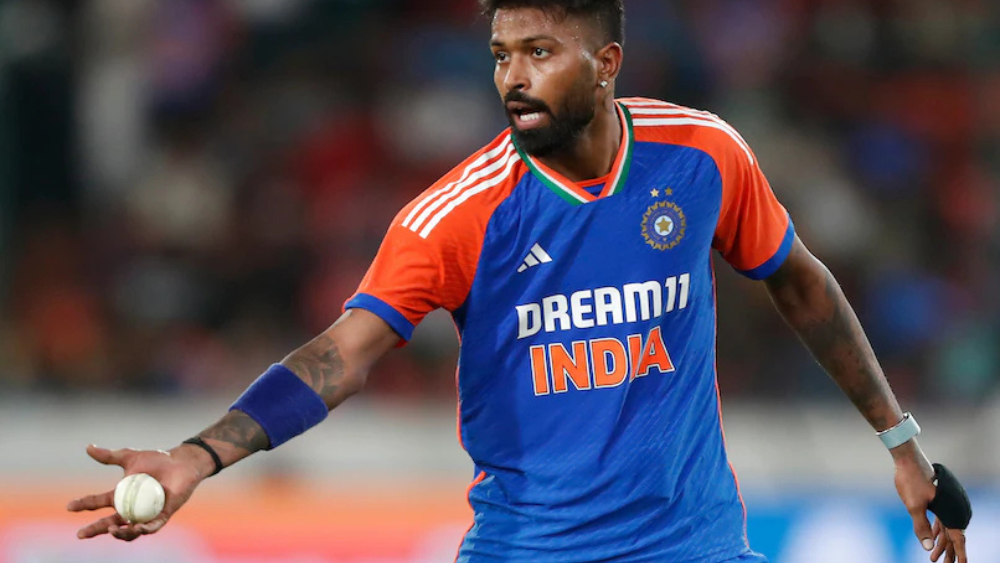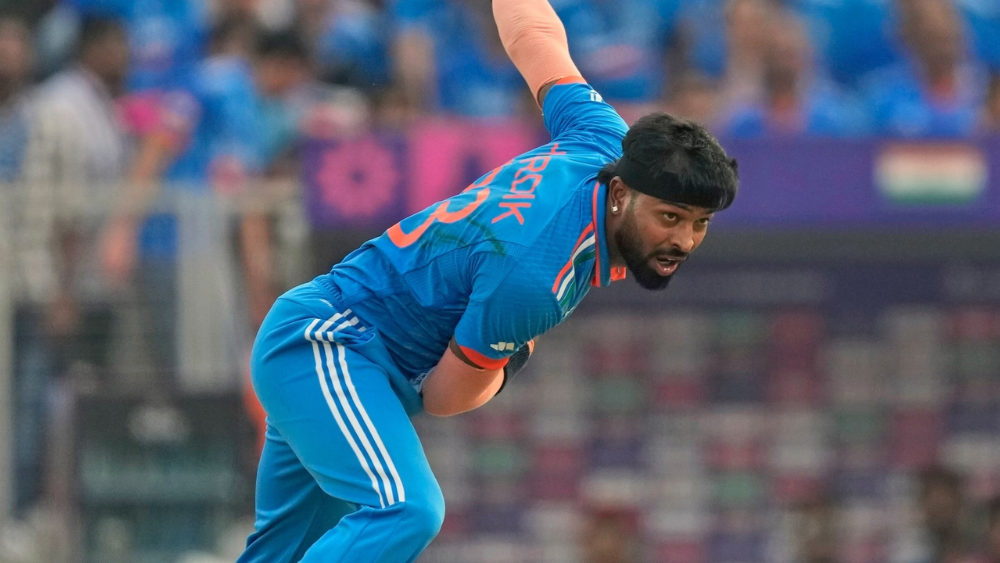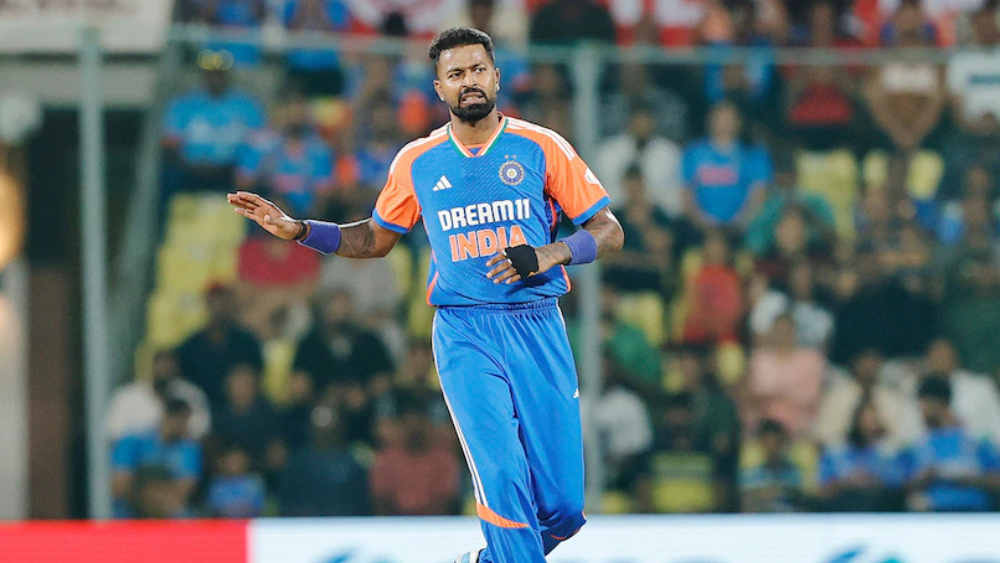Discover how Hardik Pandya’s T20I bowling has become more impactful than his batting, making him India’s key all-rounder for the 2026 T20 World Cup.
Table of Contents
Introduction: The Rise of Hardik Pandya as a Genuine All-Rounder
Hardik Pandya was born in a modest family in Baroda, Gujarat. His father shifted from Surat to support his cricket dreams. He dropped out in 9th grade to focus on cricket, playing local matches with his elder brother Krunal. His raw talent caught the eye of coaches early, and despite financial struggles, he rose through the ranks, eventually becoming one of India’s top all-rounders. His fearless attitude and aggressive gameplay were shaped by his childhood hardships and relentless dedication to the sport.
Hardik Pandya, one of India’s premier all-rounders, recently celebrated his ninth anniversary in international cricket during the ongoing T20I series against England. Since making his debut, Pandya has transformed himself into a vital component of India’s white-ball squads, earning a reputation as a game-changer with both bat and ball. However, a deeper dive into his T20I statistics suggests that his contributions with the ball may have been even more significant than his performances with the bat—something not commonly associated with the dynamic all-rounder.

The Evolution of Pandya’s Bowling Prowess
Hardik Pandya has bowled nearly 300 overs in T20Is, surpassing Bhuvneshwar Kumar’s tally of 298.3 overs, making him India’s most-utilized bowler in the format. This feat is even more impressive considering the challenges he has faced with injuries, particularly his recurring back issues. Despite these setbacks, he has evolved into a dependable bowling option, often stepping up when the team needs crucial breakthroughs.
To put his contributions into perspective, Pandya has bowled almost as many deliveries as Sri Lanka’s legendary pacer Lasith Malinga in T20Is and has taken nearly as many wickets. With 94 scalps in 112 matches, he is India’s third-highest wicket-taker in T20Is, only behind Arshdeep Singh and Yuzvendra Chahal. His economy rate of 8.17 might not appear exceptional at first glance, but his effectiveness becomes evident when analyzing his role in India’s victories.
Statistical Proof: Hardik Pandya’s Bowling vs. Batting Impact
A striking statistic that highlights his impact is the fact that over 85% of his T20I wickets (80 out of 94) have come in matches that India has won. In contrast, only about 65% of his 1750 career T20I runs (1148) have contributed to India’s victories. This suggests that his bowling performances have had a more direct influence on India’s success in T20Is than his batting.
Comparing Pandya’s Bowling Stats Over the Years
When breaking down Pandya’s bowling performances into two phases—2016-2019 and 2021-present—his evolution as a bowler becomes even more apparent.
Powerplay Performance
In the initial years of his career (2016-2019), Pandya rarely bowled in the Powerplay and struggled whenever he did. Across 10 matches where he bowled in the first six overs, he failed to take a single wicket while conceding runs at an economy rate of 10.5. However, since 2021, he has been entrusted with the new ball more frequently, featuring in the Powerplay in 38 matches. In this period, he has picked up 10 wickets while maintaining a respectable economy rate of 8.31—an impressive improvement considering the aggressive nature of T20 cricket.
Middle-Overs Specialist
The middle-overs (7-16) have been Pandya’s strongest suit, where he has become India’s most reliable seam-bowling option. Between 2016 and 2019, he took 26 wickets in this phase, striking every 21.2 deliveries and conceding runs at 8.22 per over. His effectiveness has improved further in the last four years, with 33 wickets at a superior strike rate of 19.6 and an economy of 7.95.
Since 2021, he has been the most effective seamer in the middle-overs among all T20I pacers. His 33 wickets are significantly ahead of other notable names such as Pakistan’s Haris Rauf (27 wickets), Bangladesh’s Mustafizur Rahman (24 wickets), and South Africa’s Anrich Nortje (20 wickets).
Death Overs Impact
Pandya’s ability to deliver under pressure has been evident in the death overs (17-20). In the first phase of his career, he took 12 wickets in 14 matches at the death, with an astonishingly low bowling average of 7.75 and an economy of 7.24. While his economy has slightly increased in the second phase (7.95), he has continued to pick up crucial wickets, with 13 scalps since 2021.
One of the biggest improvements in his death bowling has been his ability to restrict boundaries. His boundary concession percentage has dropped from 14.28% in his early years to just 12.69% in recent times, making him an even more effective operator in the final overs.

Defining Moments – Pandya’s Clutch Bowling Performances
Pandya’s reputation as a clutch player has been reinforced by his ability to deliver in high-pressure situations. A perfect example of this was his heroics in the 2024 T20 World Cup final against South Africa in Barbados. With India’s long ICC title drought hanging in the balance, Pandya was handed the ball in the final over, tasked with defending a narrow margin. Displaying nerves of steel, he executed his plans to perfection, leading India to a historic triumph.
This moment mirrored a similar high-pressure situation early in his career during the 2016 T20 World Cup. In India’s thrilling one-run victory over Bangladesh in Bengaluru, Pandya bowled a nerve-wracking final over. While MS Dhoni’s legendary wicketkeeping and decision-making played a crucial role, Pandya’s execution under pressure set the tone for his career.
The All-Rounder’s Role Moving Forward
While Pandya remains an important batting asset, especially in the middle order, his growing influence as a bowler cannot be ignored. His ability to deliver breakthroughs in the middle overs, bowl economically in the Powerplay, and execute under pressure at the death makes him a unique asset for Team India.
Why Pandya’s Bowling Will Be Crucial for India’s Future
T20 World Cup 2026 Preparation: With India set to defend their T20 World Cup title on home soil in 2026, Pandya’s refined bowling skills will be crucial to their campaign.
Versatility Across Phases: His ability to bowl effectively in all three phases of a T20 innings—Powerplay, middle overs, and death—adds balance to the team.
Leadership Potential: Given his experience and growing tactical acumen, Pandya could also be seen as a future captain, using his bowling skills to dictate terms in key matches.
Conclusion: The Redefinition of Hardik Pandya’s Role in T20 Cricket
As he continues to evolve, it is becoming increasingly clear that Hardik Pandya’s bowling contributions might just be more valuable than his batting—a shift in perception that could redefine his role in Indian cricket in the years to come. His ability to provide crucial breakthroughs, adapt to different phases of the game, and handle high-pressure situations makes him an indispensable asset.
As India eyes future ICC trophies, Pandya’s dual abilities will remain at the core of the team’s strategies. While he may still be known for his explosive batting, his bowling prowess has emerged as an even greater factor in India’s quest for T20 dominance.
FAQs
Is Hardik Pandya a better bowler or batsman in T20Is?
While Pandya is known for his explosive batting, statistics suggest his bowling has had a greater impact on India’s T20I victories.
How many wickets has Hardik Pandya taken in T20Is?
As of now, Hardik Pandya has taken 94 wickets in T20Is, making him one of India’s top wicket-takers in the format.
What makes Hardik Pandya’s bowling so effective?
His versatility in bowling across all phases—Powerplay, middle overs, and death—along with his ability to execute cutters and yorkers effectively.
How does Pandya’s economy rate compare to other Indian bowlers?
Pandya’s economy rate of 8.17 is competitive, especially considering his role as a middle-overs enforcer and death-over specialist.
Has Hardik Pandya ever bowled the final over in a World Cup match?
Yes, he successfully defended a final over in the 2024 T20 World Cup final, leading India to a historic victory.
Has Pandya’s bowling evolved over the years?
Initially inconsistent, Pandya has improved significantly since 2021, refining his death-over skills and becoming India’s second pacer.
What is Pandya’s best T20I bowling performance?
His best T20I figures are 4/16, showcasing his ability to take crucial wickets while maintaining control over runs.
How does Pandya perform in the Powerplay vs. Death overs?
While he was ineffective in the Powerplay early in his career, he has since improved. He is also a strong death-over bowler with a low boundary percentage.
Is Pandya India’s most reliable middle-overs pacer?
Since 2021, he has been the most effective seamer in the middle overs, outperforming international pacers like Haris Rauf and Mustafizur Rahman.
Will Pandya’s bowling be crucial for India in the 2026 T20 World Cup?
Absolutely! With his refined bowling skills, he will play a key role in India’s title defense on home soil.
By watchnewz
